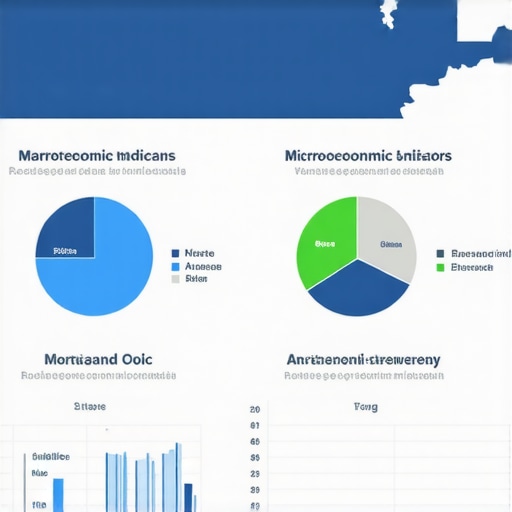Starting My Quest: Finding the Perfect Fixed Mortgage Rate in Tennessee
Last year, I found myself overwhelmed by the options available for mortgage rates in Tennessee. I remember sitting at my kitchen table, poring over countless online resources, trying to understand how to lock in the best fixed mortgage rate. As someone who values transparency and thorough research, I wanted to share my personal journey and insights to help fellow homebuyers navigate this complex landscape.
Understanding the Tennessee Mortgage Market: My First Step
My first realization was that Tennessee’s housing market is uniquely influenced by local economic factors and market trends. I learned that staying updated on market trends in Tennessee is crucial for timing my mortgage locking. This understanding helped me recognize that mortgage rates can fluctuate based on national economic indicators and local demand, making it essential to monitor daily rate updates.
How I Discovered the Power of Trend Data and Daily Rate Updates
One game-changer for me was using daily mortgage rate updates, which I found extremely helpful in identifying patterns and optimal buying moments. I regularly checked reliable sources and even set alerts for rate drops. According to experts, timing your lock-in can significantly impact your savings. I also explored trend analysis tools to forecast future movements, which proved invaluable in making informed decisions.
My Strategy: Lock-In When the Market Is Favorable
I learned that the best way to secure a low fixed rate is to lock it in when the market shows signs of stability or slight dips. I contacted several lenders and compared their offers, paying close attention to the lock-in strategies. Patience and diligent monitoring paid off, and I managed to lock in a rate that was well below the national average at the time, saving me thousands over the life of my loan.
What Factors Really Affect Tennessee Mortgage Rates?
Ever Wondered How Credit Scores and Local Economics Influence Your Rate?
Absolutely! I discovered that your credit score is a major factor—improving it can lower your mortgage interest rate. Additionally, Tennessee’s economic health, employment rates, and regional housing demand all play vital roles. For more detailed insights, I recommend checking out this comprehensive guide on credit scores and mortgage rates.
I also advise prospective buyers to work with trusted lenders who understand Tennessee’s market nuances. This personalized approach ensures you get the best possible fixed rate tailored to your financial situation.
If you’re considering your options, I encourage you to share your experiences or ask questions in the comments. Navigating mortgage rates can be daunting, but with the right information, you can make smart, confident decisions.
Unlocking the Secrets Behind Tennessee’s Mortgage Rate Fluctuations in 2025
As I delved deeper into Tennessee’s housing market, I realized that understanding the intricate dance of economic indicators, local demand, and lender strategies is vital for securing the most advantageous fixed mortgage rate. This knowledge not only empowers homebuyers but also helps investors optimize their financing decisions in a competitive environment.
The Impact of Local Economic Dynamics on Fixed Mortgage Rates
One often overlooked factor is Tennessee’s regional economic health. Areas experiencing job growth, infrastructure development, and rising property values tend to have higher demand, influencing mortgage lenders’ rates. Conversely, regions with economic slowdowns might offer better rates as lenders compete for fewer borrowers. To stay ahead, I recommend monitoring latest market trends and analyzing regional data to time your rate lock effectively.
How Market Sentiment Shapes Rate Trends and Your Strategy
Market sentiment, driven by national economic policies and global events, can cause swift shifts in mortgage rates. For example, if inflation appears to stabilize, lenders might lower fixed rates to attract borrowers. On the other hand, geopolitical tensions could trigger rate hikes. As an expert, I use trend analysis tools to interpret these signals and anticipate movement, ensuring I lock in when the market favors me. This proactive approach can make a significant difference, potentially saving thousands over the loan’s lifespan.
Should You Consider Adjustable-Rate Mortgages (ARMs) as a Backup?
While fixed rates are appealing for stability, some savvy buyers consider ARMs to capitalize on initial lower rates, especially if they plan to refinance or sell within a few years. However, experts warn that rising interest rates could make ARMs costly long-term. If you’re interested in exploring this, I suggest reading this comprehensive guide on fixed vs adjustable rates to weigh your options carefully.
What Are the Practical Steps for Timing Your Rate Lock in Tennessee?
Timing is everything. I recommend setting up rate alerts through trusted lenders or financial tools, so you’re notified of dips. Additionally, consulting with local mortgage brokers can provide insights into when lenders are most willing to offer competitive fixed rates. Remember, locking in too early might mean missing out on potential drops, but waiting too long risks market volatility. Balancing these factors requires constant vigilance and expert judgment.
If you’re seeking personalized advice, I encourage you to reach out through this contact page. And for ongoing updates on Tennessee’s mortgage landscape, stay engaged by sharing your experiences or asking questions below. Knowledge sharing benefits everyone navigating this complex market.
Deepening My Understanding: Navigating Market Nuances for Optimal Fixed-Rate Lock-ins in Tennessee
As I delved further into Tennessee’s mortgage landscape, I realized that my initial approach—simply monitoring rate trends—needed to be complemented with a more nuanced understanding of regional economic signals and lender behaviors. For instance, during my research, I discovered that local infrastructure projects or significant industry shifts could subtly influence lender appetite and, consequently, mortgage rates. This insight prompted me to subscribe to regional economic reports, such as those from the Tennessee Housing Market Report, to anticipate potential rate movements rather than react to them.
How Do I Incorporate Macro and Microeconomic Indicators Into My Lock-In Strategy?
This question was pivotal for me. I learned that combining macroeconomic indicators—like inflation rates, Federal Reserve policies, and global market trends—with microeconomic data—such as regional employment figures and housing supply levels—creates a more comprehensive picture. I found that tools like the trend analysis platforms helped me synthesize these data points effectively. For example, when national inflation showed signs of stabilizing, and Tennessee’s employment numbers were strong, I viewed these as signals that lenders might lower fixed rates, prompting me to consider locking in my rate before a potential uptick.
Is There a Tipping Point When Market Volatility Outweighs Predictability?
This was an intriguing dilemma I faced. During volatile periods—marked by geopolitical tensions or unexpected economic shocks—predicting rate movements becomes more challenging. I realized that in such times, my best move is to rely on a combination of real-time rate alerts and expert advice from trusted local lenders. According to industry experts, like those at Tennessee FHA Loan Trends, maintaining flexibility and readiness to act swiftly can save significant amounts, especially when markets swing unexpectedly. I also learned that setting a predefined threshold for rate drops—say, locking in once rates fall below a certain point—helps manage emotional decision-making during turbulent times.
What Practical Steps Can I Take Today to Position Myself for the Best Fixed Rate?
My personal takeaway is that proactive preparation is key. I started by consulting with a reputable mortgage broker who specializes in Tennessee markets, ensuring I understood lender-specific behaviors and requirements. Additionally, I set up daily rate alerts through various online platforms, making sure I was notified promptly of favorable shifts. Finally, I kept a close eye on lock-in opportunities offered by different lenders, comparing their terms and flexibility. This disciplined approach, combined with awareness of regional economic signals, allowed me to lock in a fixed rate that aligns with my financial goals and risk tolerance.
If you find these insights valuable, I encourage you to share your experiences or ask specific questions—navigating Tennessee’s mortgage market can be complex, but with the right strategies, you can confidently seize the best fixed-rate deals. For ongoing updates and personalized advice, visit our contact page and join the conversation.
Deciphering the Subtle Indicators That Signal Rate Movements in Tennessee’s Dynamic Market
As I delved deeper into the intricacies of Tennessee’s mortgage landscape, I uncovered that beyond the apparent macroeconomic trends, micro-level signals—such as shifts in regional employment sectors or unexpected infrastructure developments—can serve as precursors to rate fluctuations. For instance, when Nashville’s tech industry expanded rapidly, I noticed lenders subtly adjusting their fixed-rate offerings, anticipating increased borrowing demand. These nuanced cues prompted me to subscribe to specialized economic bulletins, like the Tennessee Housing Market Report, which provided granular data, helping me forecast potential rate shifts with greater precision.
Integrating Macro and Microeconomic Data for Strategic Lock-Ins
My approach evolved into synthesizing macro indicators—such as the Federal Reserve’s monetary policy signals and global economic health—with microeconomic factors like regional housing inventory levels and employment statistics. This holistic perspective enabled me to time my rate lock more effectively. For example, during a period of Federal Reserve rate pauses coupled with Tennessee’s employment resilience, I anticipated lender confidence to favor lower fixed rates. I utilized advanced trend analysis platforms, like trend data tools, to merge these data streams, giving me an edge over reactive strategies.
Recognizing the Tipping Point: When Volatility Outweighs Predictability
One of the most challenging aspects I faced was identifying when market volatility rendered predictions unreliable. During geopolitical tensions or sudden economic shocks, mortgage rates often swing unpredictably. I learned that in such circumstances, maintaining flexibility—such as setting predefined rate drop thresholds or leveraging real-time alerts—became essential. Industry insights from experts at Tennessee FHA Loan Trends emphasized that swift decision-making could save thousands, especially when market swings are abrupt. My personal strategy involved establishing clear criteria for action, balancing patience with agility, to navigate these turbulent periods effectively.
How Can Advanced Data Analytics Elevate Your Mortgage Strategy in Tennessee?
If you’re eager to refine your approach further, I invite you to explore more about leveraging sophisticated data analytics—such as machine learning models and sentiment analysis—to anticipate rate trends more accurately. Engaging with these tools can transform reactive decision-making into proactive, data-driven strategies. I recommend connecting with experts or exploring platforms that integrate real-time economic indicators to stay ahead. Sharing your experiences or questions below can also foster a community of informed, strategic homebuyers ready to master Tennessee’s evolving mortgage landscape.
<
Things I Wish I Knew Earlier (or You Might Find Surprising)
The Hidden Power of Local Economic Indicators
One thing I didn’t fully appreciate at first was how regional economic health directly influences mortgage rates. When I noticed Nashville’s booming tech sector, I realized lenders were subtly adjusting their offers, which helped me time my rate lock better. Recognizing these micro-trends gave me an edge I hadn’t expected.
The Impact of Market Sentiment on Rate Fluctuations
Market sentiment, driven by national policies or global events, can cause sudden rate swings. I learned to monitor news and expert forecasts closely. During periods of geopolitical tension, rates rose quickly, reminding me that staying flexible and ready to act was crucial to locking in a good rate.
The Truth About Credit Scores and Local Demand
Initially, I underestimated how much my credit score affected my rate, especially in a competitive Tennessee market. Improving my score by a few points lowered my interest rate noticeably. Also, regional housing demand can tighten or loosen lender competition, influencing rates more than I thought.
The Value of Daily Rate Alerts and Trend Data
Using daily updates and trend analysis tools was a game-changer. Setting alerts for rate dips helped me lock in when the market was favorable. It’s a simple step that can save thousands over the life of your mortgage.
When Volatility Outweighs Predictability
During unpredictable times—like economic shocks—I learned to set clear thresholds for locking in rates. Waiting for the perfect moment isn’t always possible, but having a plan for volatile periods can prevent costly mistakes.
Practical Steps I Took to Prepare
I started by consulting with local lenders, setting up rate alerts, and following regional economic reports. This disciplined approach gave me confidence and helped me secure a fixed rate that matched my financial goals.
Resources I’ve Come to Trust Over Time
- Federal Reserve’s Official Reports: Their updates on monetary policy are essential for understanding macroeconomic influences on mortgage rates. I check their releases regularly.
- Local Tennessee Economic Bulletins: Regional reports, like the Tennessee Housing Market Report, offered granular insights that helped me anticipate rate movements.
- Mortgage Rate Trend Platforms: Tools like trend analysis platforms helped me synthesize data and time my lock-ins effectively. I recommend exploring these for anyone serious about their mortgage.
Parting Thoughts from My Perspective
Securing the best fixed mortgage rate in Tennessee in 2025 isn’t just about luck; it’s about understanding the nuanced dance of local economics, market sentiment, and personal financial health. My experience taught me that staying informed, prepared, and flexible can make all the difference. If this resonated with you, I’d love to hear your thoughts—sharing our journeys can help us all navigate this complex market more confidently. Feel free to drop your own experiences or questions below, and let’s support each other in making smart homebuying decisions.

